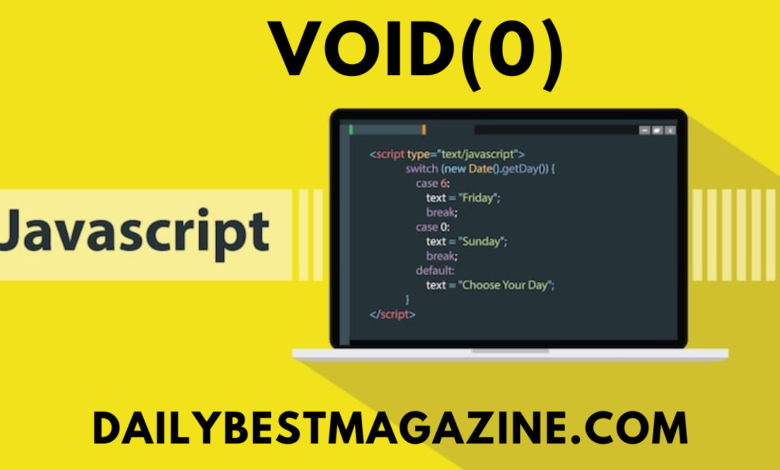Understanding void(0) in JavaScript: What It Is and Why It Matters

And void(0) is one of those confusing first time in the world of JavaScript expressions. So, if you’re a newbie or are an experienced developer, you’ve probably encountered this word without understanding exactly what it does and how it’s used. In this article we’ll demystify void(0), and explain how and why this is used often in JavaScript.
What Does void(0) Mean?
Here void(0) is an expression in JavaScript where void(0) returns undefined only. Simply put, void(0) instructs the browser to do nothing, especially not return a value, or do anything else. The void keyword in JavaScript is an operator that evaluates an expression and makes sure that it wouldn’t return any value at all.
void(0) has no special meaning in the part (0), it’s just a placeholder. In fact, replacing the 0 with almost any value will give you the same outcome, undefined. Therefore, it is often the standard placeholder, because it is a simple, harmless number.
What’s the point of using void(0)?
You might be wondering, why would anyone write something that does absolutely nothing. Well and void(0), there is a reason why void(0) serves its purpose in certain web development scenarios. Here are a few common reasons why developers use it:
How to Premt a Page from reloading
typically to stop a page from reloading or navigating when a link is clicked, one of the main uses of void(0) In most of the web pages, clicking on a link will invoke the browser prompting for a new page or a new refresh to the old page to take place. On some occasions, however, you would like the link to cause action, such as opening a pop up or a menu, instead of changing the page. In such cases, void(0) is used to disable the usual link behavior and disabling the behavior of a page from reloading.
Creating a Dummy Link
Sometime a developer may want to add a clickable element that does nothing or Redirects but for the time being. It could be helpful when you’re developing a web page where you have yet to determine what the link will do or test the design before the need to worry about functionality. With void(0) you can create a link that looks clickable but doesn’t do anything when clicked. It’s a nice little placeholder for future development.
How to trigger JavaScript functions without navigation.
You may have developers who would like a button and/or a link to run some JavaScript such as showing a hidden portion of the page or updating some part of the content, but moving away from the page and that’s where void(0) comes in handy that does not do anything besides running the JavaScript function. Without void(0) the browser might try to reload the page or follow a URL after executing the code and it might not be what you want.

Common Mistakes with void(0)
While void(0) can feel like such a simple thing, it’s one that people tend to misuse quite often. Some of the common mistakes include:
Overuse of void(0)
void(0) serves a purpose at times, but not always. Even when better options exist, sometimes developers over rely on it. For instance, if you are doing nothing more than running some JavaScript code through a link then you might want to replace it with a button element. Likewise, the aim is for buttons to trigger something and for links to move you somewhere.
Other JavaScript Functions
Other JavaScript methods that return values or perform action might confuse new developers to think that void(0) will return anything. Remember that void(0) doesn’t do anything but return undefined and its sole purpose is to prevent the default behavior that is reload of the page.
When Should You Use void(0)?
If your project is a web one and there comes a time when you want a link not to refresh the page, void(0) can prove very convenient. But it’s important to use it properly. Not useful always, it can make the code even more complicated if you over rely on it. Normally, in modern web development there are better ways of navigating and interacting with the user.
For instance, instead of using a link with void(0) to invoke a JavaScript action, you can use a button or any other way instead. Good thing modern frameworks and libraries like React or Vue.js have solved this in a way that’s a little less necessary since they handle user interactions in a more streamlined way.
Conclusion
void(0) is a bit of a mystery until you know what it’s doing. Then really, at its core, it’s just a way to block a link or other element from doing something you don’t want, like navigating to a new page. A handy tool in the web developer’s toolbox, especially if you’re working with links that have to trigger actions but don’t affect the page.
It’s not uncommon to want to say void(0), but that is mainly for convenience sake and if you find yourself using it quite a lot, you might want to avoid it all together and this is where a helper function can be very useful to you to avoid writing the same thing over and over again. Learning when and where to use it will help you write cleaner code, and also make your JavaScript code more efficient.